Welcoming you to the enchanting realm of short-haired dog breeds, where grace meets simplicity, and companionship takes on a whole new level.
As we embark on this journey, we aim to delve into the world of these remarkable companions, exploring the characteristics of short-haired dogs.
What is a Short-haired Dog Breed?
Short-haired dog breeds refer to canine companions with shorter fur coats than their long-haired counterparts.
These breeds are celebrated for their low-maintenance grooming needs, making them an ideal choice for those seeking a furry friend without the commitment of extensive coat care.
Short-haired breeds stand out as the epitome of elegance and charm in the vast spectrum of canine diversity. They have become favorites among families and dog enthusiasts alike.
10 Best Short-Haired Dog Breeds
We unveil the top short-haired dog breeds with unique qualities, making them the perfect four-legged companions for families, singles, and everyone.
1. Chihuahua
Chihuahuas are the tiniest dog breed but pack a big personality. They have large, round eyes and ears and a soft spot in the hearts of many dog lovers. Chihuahuas come in two coat varieties: smooth and long-haired.

Physical Characteristics
- Height: 6 to 9 inches
- Weight: Up to 6 pounds
- Coat and Color: Short or long, soft coat; colors include fawn, black, white, and various combinations
- Life Expectancy: 12 to 20 years
2. German Shorthaired Pointer
German Shorthaired Pointers are versatile, athletic dogs known for their boundless energy and intelligence. They have a sleek coat and a distinctive head shape. These dogs excel in various activities, from hunting to agility.
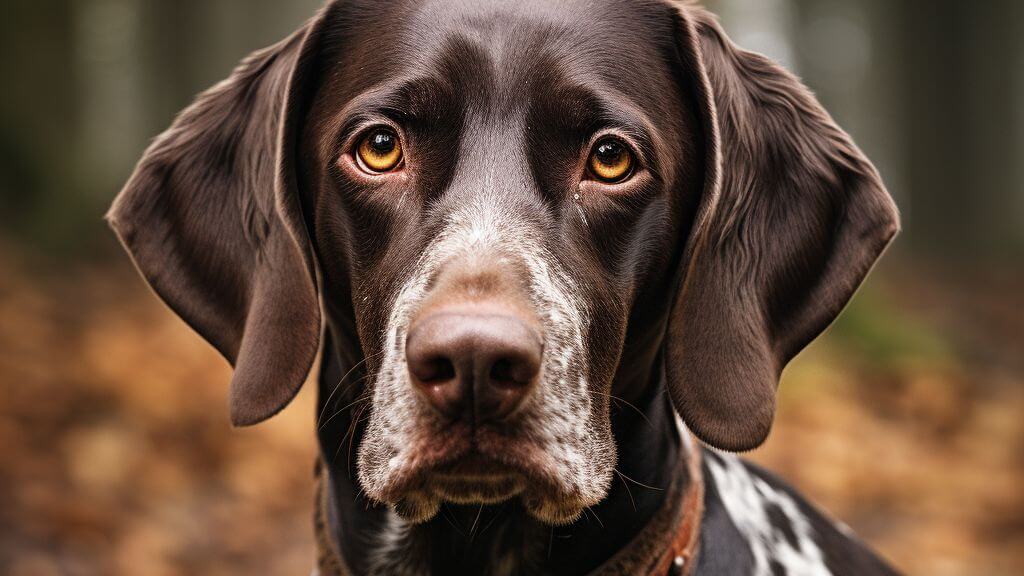
Physical Characteristics
- Height: 23 to 25 inches (males), 21 to 23 inches (females)
- Weight: 55 to 70 pounds (males), 45 to 60 pounds (females)
- Coat and Color: Short, dense coat in liver or liver and white
- Life Expectancy: 10 to 14 years
3. Doberman Pinscher
Doberman Pinschers are medium to large-sized dogs known for their sleek and muscular appearance. They have a reputation for being loyal and protective. Dobies are highly intelligent and trainable, making them excellent working dogs.

Physical Characteristics
- Height: 26 to 28 inches (males), 24 to 26 inches (females)
- Weight: 75 to 100 pounds (males), 60 to 90 pounds (females)
- Coat and Color: Short, smooth coat in black, red, blue, or fawn with rust markings
- Life Expectancy: 10 to 13 years
4. Great Dane
Great Danes are giant dogs with a majestic appearance. Despite their size, they are known for being gentle giants and are often called “gentle giants.” Great Danes are friendly, good-natured, and make excellent family companions.
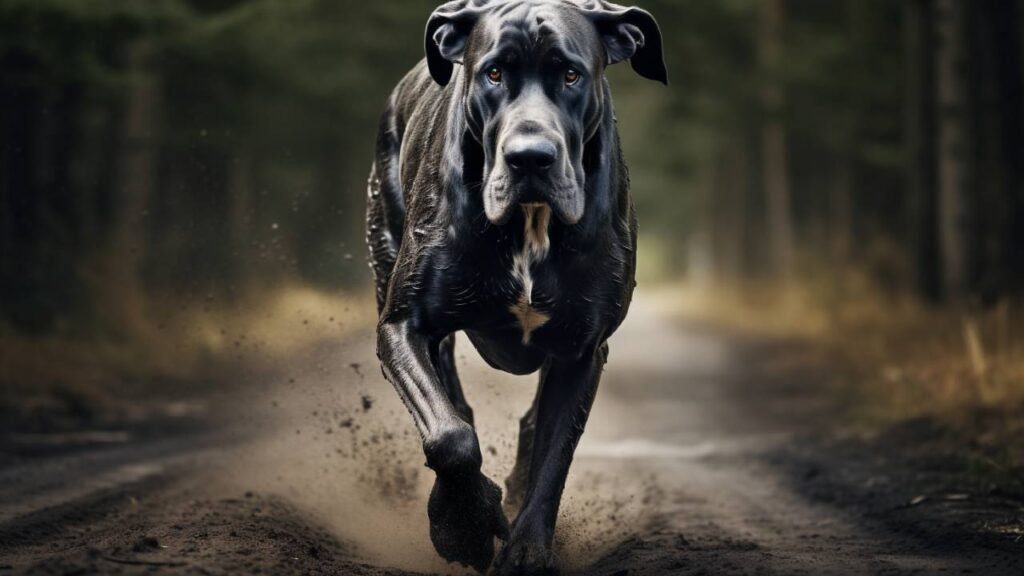
Physical Characteristics
- Height: 30 to 34 inches (males), 28 to 32 inches (females)
- Weight: 140 to 175 pounds (males), 110 to 140 pounds (females)
- Coat and Color: Short, dense coat in various colors, including fawn, brindle, blue, black, and harlequin
- Life Expectancy: 7 to 10 years
5. Boston Terrier
Boston Terriers are small, muscular dogs with a friendly and sociable temperament. They are known for their tuxedo-like coat markings and distinctive “tuxedo” appearance. Bostons are affectionate, making them excellent companions for families and individuals alike.

Physical Characteristics
- Height: 15 to 17 inches
- Weight: 12 to 25 pounds
- Coat and Color: Short, smooth coat with distinctive tuxedo markings; colors include brindle, seal, and black with white markings
- Life Expectancy: 13 to 15 years
6. Labrador Retriever
Labrador Retrievers are known for their friendly nature and intelligence. They are medium to large-sized dogs with a muscular build, expressive eyes, and a distinctive otter-like tail. Labs are versatile, excelling as family pets, service dogs, and in various canine sports.
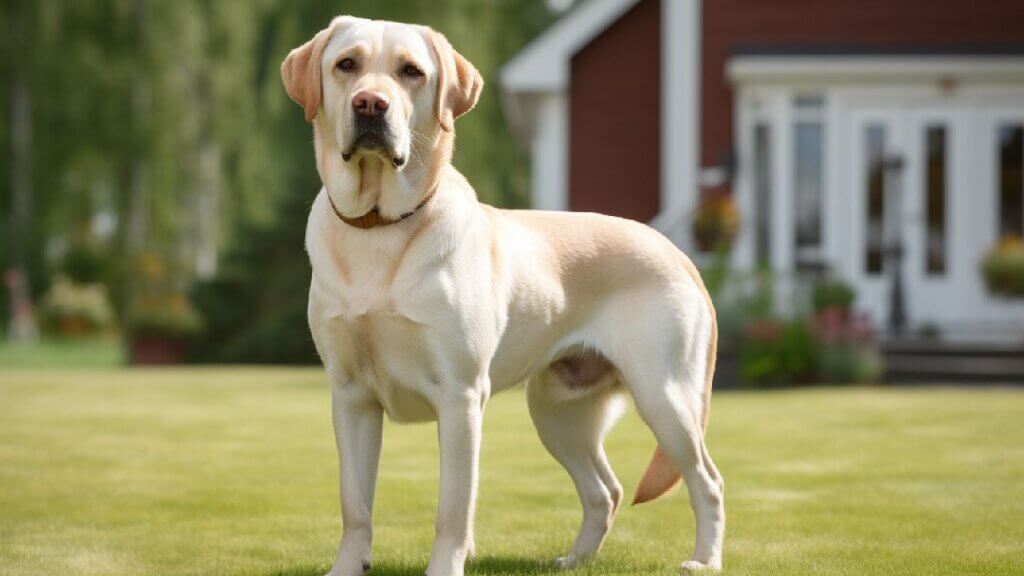
Physical Characteristics
- Height: 21.5 to 24.5 inches (males), 21.5 to 23.5 inches (females)
- Weight: 65 to 80 pounds (males), 55 to 70 pounds (females)
- Coat and Color: Short, dense double coat; colors include black, yellow, and chocolate
- Life Expectancy: 10 to 14 years
7. Beagle
Beagles are small to medium-sized dogs with an appealing, friendly expression. Known for their keen sense of smell, they are excellent scent hounds. Beagles are sturdy yet possess a gentle demeanor, making them suitable for families and singles alike.

Physical Characteristics
- Height: 13 to 15 inches
- Weight: 20 to 30 pounds
- Coat and Color: Short, dense, and water-resistant coat; colors include tri-color, lemon, and red and white
- Life Expectancy: 10 to 15 years
8. Dachshund
Dachshunds, often called “wiener dogs,” are known for their distinctive elongated bodies and short legs. Despite their small size, they are courageous and playful. Dachshunds come in three coat varieties: smooth, long-haired, and wire-haired.
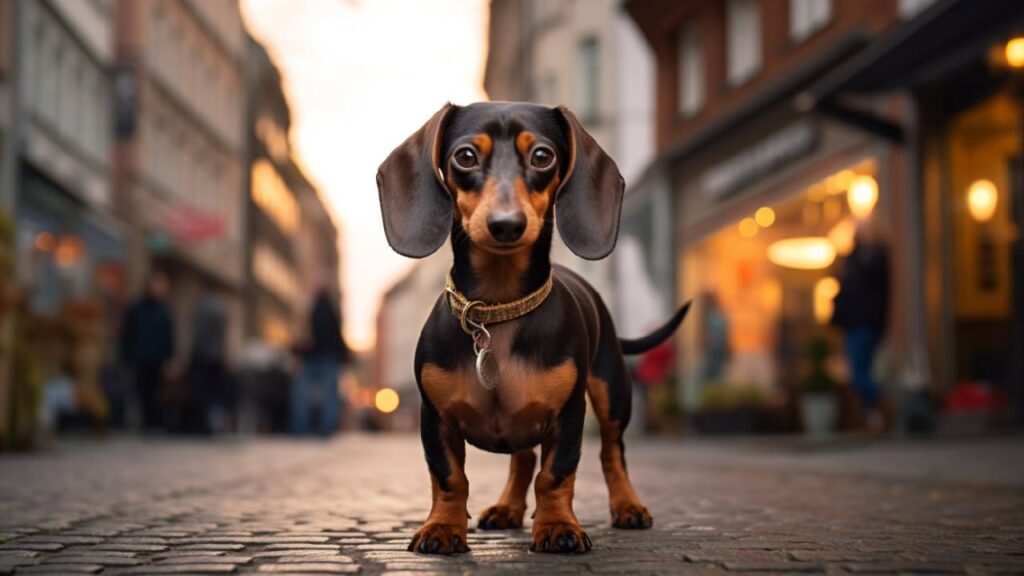
Physical Characteristics
- Height: 8 to 9 inches (standard), 5 to 6 inches (miniature)
- Weight: 16 to 32 pounds (standard), up to 11 pounds (miniature)
- Coat and Color: Short, smooth coat in various colors including red, black and tan, and chocolate and tan
- Life Expectancy: 12 to 16 years
9. Boxer
Boxers are medium to large-sized dogs with a strong, muscular build and an alert expression. They are known for their boundless energy and affectionate nature. Boxers are excellent family dogs known for their loyalty and protective instincts.
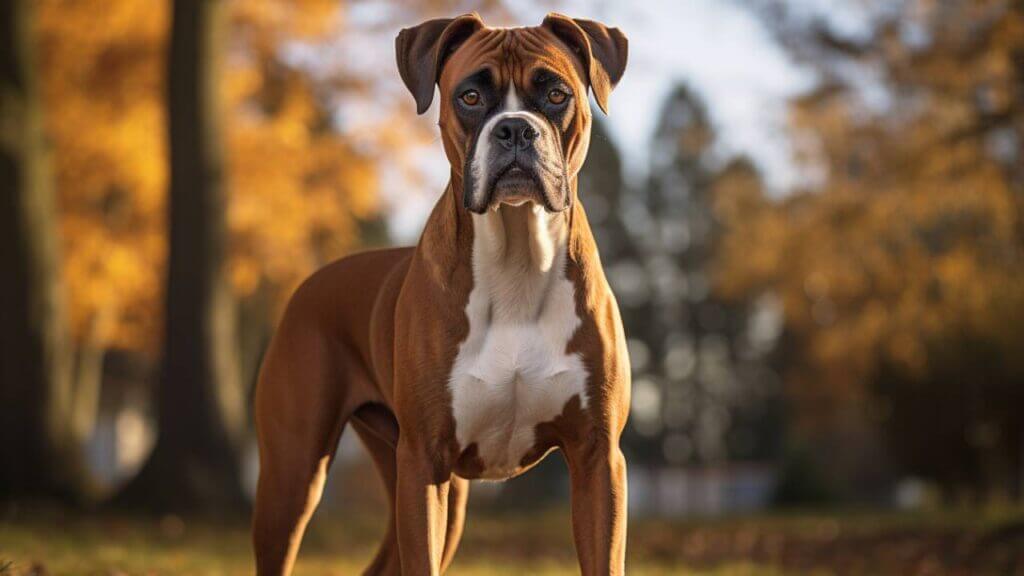
Physical Characteristics
- Height: 23 to 25 inches (males), 21.5 to 23.5 inches (females)
- Weight: 65 to 80 pounds (males), 50 to 65 pounds (females)
- Coat and Color: Short, smooth coat in fawn or brindle with a distinct square head
- Life Expectancy: 10 to 12 years
10. Bulldog
Bulldogs, with their distinctive wrinkled face and pushed-in nose, are medium-sized dogs known for their loose, saggy skin and signature “bat ear” appearance. Despite their somewhat intimidating look, Bulldogs are affectionate and make excellent companions.
Physical Characteristics
- Height: 14 to 15 inches
- Weight: 50 pounds (males), 40 pounds (females)
- Coat and Color: Short, smooth coat; colors include brindle, fawn, and white
- Life Expectancy: 8 to 10 years
5 Reasons to Choose Short-Haired Breeds?
When choosing a furry friend, the variety of breeds can be overwhelming. Short-haired dog breeds, however, emerge as a clear and compelling choice for numerous reasons that resonate with the preferences and lifestyles of dog owners.
- Low Maintenance
Short-haired breeds are renowned for their low-maintenance coats, offering a practical solution for individuals with busy schedules. Unlike their long-haired counterparts, these dogs require less grooming, sparing their owners the laborious task of constant brushing and detangling. This translates to saved time and ensures that the joy of pet ownership remains a delightful experience rather than a chore.
- Friendly and Sociable
Another captivating aspect of short-haired breeds lies in their friendly and pleasant nature. These dogs often boast amiable personalities, making them excellent companions for families, singles, and seniors.
Their pleasant disposition makes them approachable and easy to integrate into various social settings, fostering a harmonious bond between the canine and its human counterparts.
- Excellent With Children
Short-haired dog breeds have earned a reputation for being excellent family pets, particularly for households with children.
Their sturdy and robust nature, inherent patience, and playfulness create an ideal environment for kids to forge lasting connections with their four-legged friends.
- Energetic and Playful
For those who lead an active lifestyle, short-haired breeds are well-suited companions. Many dogs have abundant energy, making them perfect for outdoor activities and exercise.
Short-haired breeds are ready and willing to participate, infusing vitality into the lives of their owners.
- Adaptability
Short-haired dogs showcase remarkable adaptability, thriving in various living situations. Whether you reside in a spacious suburban home, a cozy city apartment, or even in the countryside, these breeds effortlessly adjust to their surroundings.
Short-haired dogs can seamlessly integrate into diverse lifestyles, making them versatile and suitable for various living environments.
7 Grooming Needs for Short-Haired Dogs
Short-haired dogs may be known for their low-maintenance coats, but that doesn’t mean they don’t require proper grooming. While they may not have the luxurious tresses of their long-haired counterparts, short-haired breeds still benefit from a grooming routine to keep their coats shiny, skin healthy, and overall well-being in check.
1. Brushing and Shedding
Short-haired dogs may shed less than their long-haired counterparts, but regular brushing is still crucial. It helps remove loose fur, reduces shedding, and stimulates the production of natural oils for a shiny coat.
Use a soft-bristle brush or a grooming mitt to keep their fur in top condition. Depending on the breed, brushing once or twice weekly is usually sufficient.
2. Bathing Essentials
Short-haired dogs generally don’t require frequent baths, but cleanliness is vital. Use a mild dog shampoo and ensure that the water is at a comfortable temperature.
Be cautious not to strip away their natural oils, which can lead to skin dryness. Bathing every two to three months or as needed, depending on your dog’s activities, is a good rule of thumb.
3. Nail Care
Regular nail trims are essential for short-haired dogs. Long nails can be uncomfortable for your furry friend and may even lead to joint problems.
Use a quality dog nail trimmer, and be mindful not to cut into the quick. If you need clarification or are uncomfortable with this task, your vet or a professional groomer can assist.
4. Ear Cleaning
Short-haired breeds are not immune to ear issues, and routine ear cleaning is crucial. Use a dog-friendly ear-cleaning solution and a cotton ball to clean the ears gently.
Check for signs of infection, such as redness, swelling, or a foul odor. If you notice anything unusual, consult your vet promptly.
5. Regular Vet Check-ups
Even with a short coat, regular veterinary check-ups are essential. These visits help catch any potential health issues early on.
Your vet can guide your dog’s needs and recommend additional grooming practices.
6. Dental Care
Dental hygiene is often overlooked but is a critical aspect of grooming for all dogs, regardless of coat length.
Brush your short-haired dog’s teeth regularly using a canine toothbrush and toothpaste. Dental chews and toys can also aid in keeping their teeth clean and healthy.
7. Grooming Tools
Invest in the right grooming tools for your short-haired companion. Quality brushes, nail trimmers, and other grooming supplies contribute to a positive grooming experience for your dog.
Choose tools suitable for your dog’s coat type to ensure effective grooming without causing discomfort.

Short-Haired Dog Breeds for Families
Discover the joy, loyalty, and safety these canine companions bring as we explore the art of finding your perfect furry friend.
Creating Lifelong Bonds
Short-haired dog breeds have an uncanny ability to create profound and enduring bonds with their human family members.
These dogs often possess a friendly and affectionate nature that makes them naturally inclined towards forming close connections. One notable example is the Labrador Retriever, renowned for its loyalty and gentle temperament.
Nurturing Family-Friendly Qualities
Short-haired dog breeds are often celebrated for their family-friendly qualities, making them exceptional choices for households with children. Their friendly disposition and playful nature create an environment of joy and companionship.
Breeds like the Beagle, with their cheerful demeanor, thrive on family interactions, engaging in games and activities that bring laughter and happiness to every household member.
Safety and Compatibility
Safety and compatibility are paramount considerations when selecting a dog for a family; short-haired dog breeds often excel in these aspects, making them suitable companions for households of various sizes and compositions.
Breeds such as the Bulldog, known for their calm demeanor, offer a sense of security, especially in homes with young children.
Conclusion
Short-haired dog breeds stand as more than pets; they’re cherished family members. From creating lifelong bonds to fostering family-friendly qualities, these companions offer immeasurable joy.
As you explore the world of short-haired breeds, may you find a canine companion that complements your lifestyle and enriches it with unwavering love and companionship.
Here’s to the joy and fulfillment that short-haired dog breeds bring into our lives, creating lasting memories and forging unbreakable bonds.

FAQs
Are short-haired dog breeds suitable for families with allergies?
Many short-haired dog breeds are considered hypoallergenic, as they shed less dander. However, individual reactions vary, so spending time with a specific breed before bringing one home is advisable.
Can short-haired dog breeds live in apartments?
Short-haired breeds like Bulldogs and Beagles adapt well to apartment living. However, regular exercise and mental stimulation are crucial to keeping them happy and healthy.
Which short-haired dog breeds are known for being good with children?
Breeds such as the Labrador Retriever, Beagle, and Cavalier King Charles Spaniel are often praised for their gentle and family-friendly nature, making them great companions for children.
Do short-haired dog breeds have specific health considerations?
While each breed has its unique health considerations, short-haired breeds, in general, may be prone to skin issues. Regular veterinary check-ups and a balanced diet contribute to their health and well-being.
Are short-haired dogs less active than long-haired breeds?
Not necessarily. Activity levels vary among breeds. While some short-haired breeds, like Bulldogs, are known for their calm nature, others, like the Dachshund, can be pretty energetic.


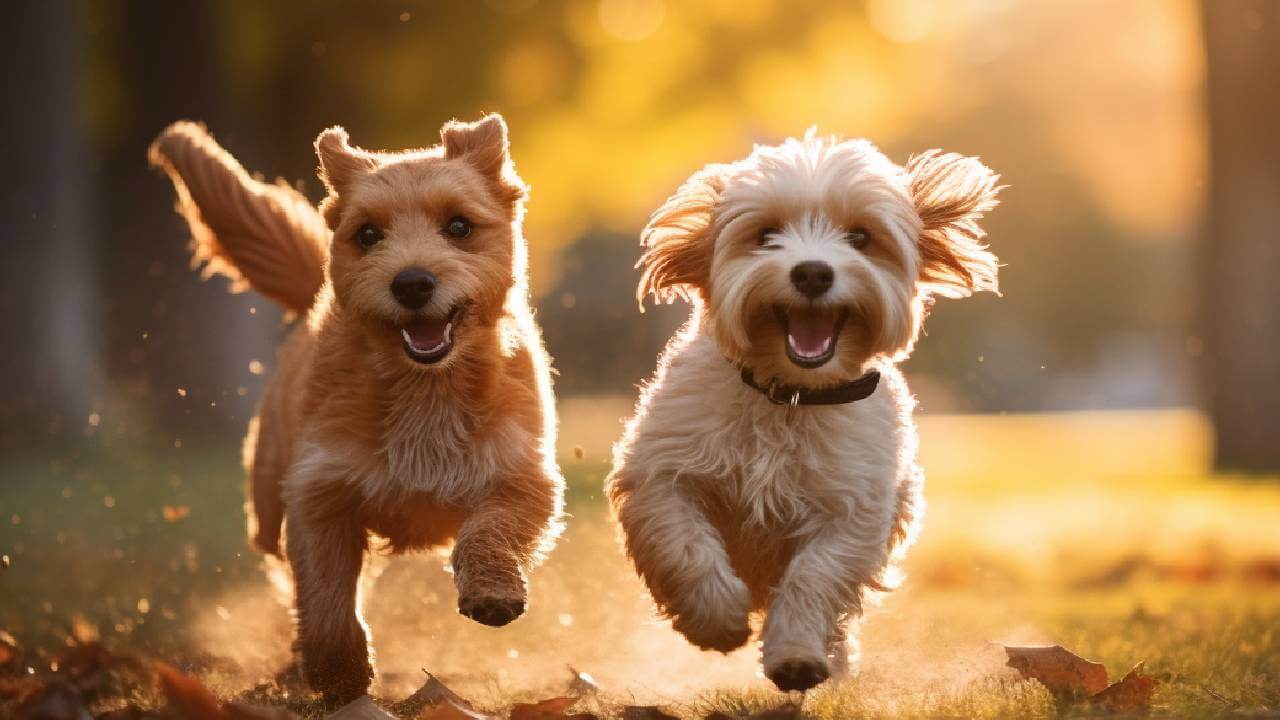

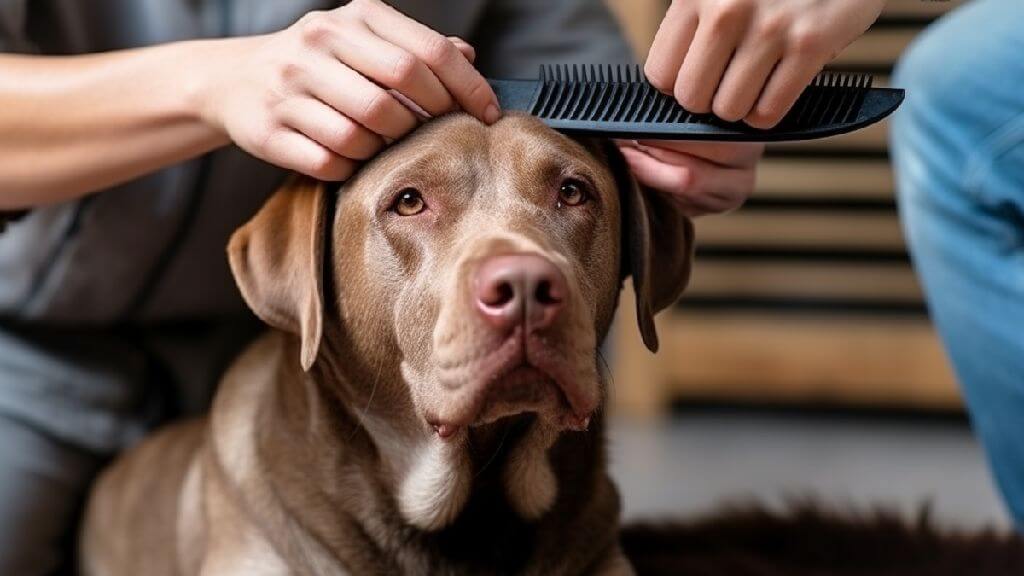

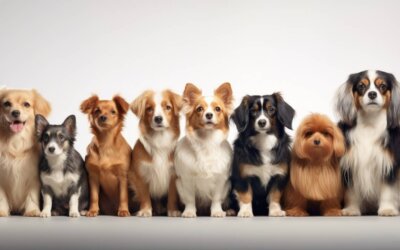
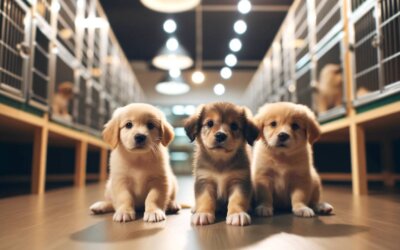
Dachshund its a love 😍
I’m considering adopting a short-haired dog
i have a lab and this is the friendliest dog I have ever met